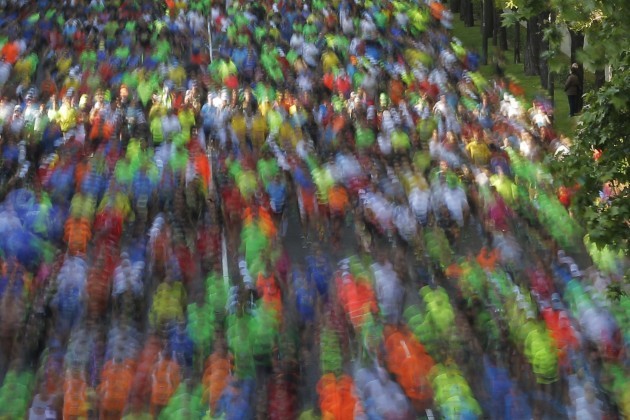WE IRISH LOVE a challenge, and will travel all over the world for a bit of adventure, even better if we’re ill-prepared and have never attempted anything remotely like it before.
So here’s a few madcap ideas to get you thinking over the winter; from zip-lining down river canyons in Peru, to chasing the sun in Canada’s Yukon Territory — go on, we dare you…
1) Marathon Des Sables
Where; Sahara Desert
When; April
Each ultra-marathon claims to be the toughest. And each is, in its own different way. But this marathon is easily among the very toughest of the tough. Why? Known simply as the MdS, the race is a gruelling multi-stage adventure through a formidable landscape in one of the world’s most inhospitable climates — the Sahara desert. The rules require you to be self-sufficient, to carry with you on your back everything except water that you need to survive. You are given a place in a tent to sleep at night, but any other equipment and food must be carried by you.
As the hosts note, when you finish, “You will have run the equivalent of five and a half marathons in five or six days” and you will have done it in 100-degree heat. Despite its highly challenging nature, the race has grown in popularity every year since it began 28 years ago.
2) The Jungle Ultra
Where; Peru
When; May 2015
Peru’s Jungle Ultra is mostly downhill, dropping 10,500 feet from the cloud forest down into the Amazon over its 142.6-mile course. The five-stage, self-supported race threads its way through vast and isolated terrain, where temperatures soar to around 32 degrees Celsius. The humidity is oppressive, and hordes of pesky insects will mean you’ll need to stay as covered up as possible — not easy in this heat.
Along the way, participants plunge down into tropical rivers and streams, and in some cases, zip-line over them. For the race itself, you will be self-sufficient carrying your own hammock, sleeping bag, food and supplies for the entire race, replenishing your (minimum) 2.5 litres of water along the way at check points and base camps. Sleep deprivation is one of the main reasons why competitors don’t finish, or fall outside the time limit.
3) 6693 Ultra
Where; Yukon Territory
When; March 20th 2015
Only 11 people have finished this punishing, cold-weather ultra in Canada’s Yukon territory, though many more have tried. Just 23 miles from the starting gate at the Eagle Plains hotel on the Klondike Highway, racers cross the Arctic Circle. From there, they follow the snowed-over Dempster highway either 120 miles or 350 miles to the Arctic Ocean, dragging their gear behind them on sleds.
The constant sub-zero temperatures and hurricane-strength Katabatic winds have literally reduced people to crawling. Even tougher than that though, is the mental game: More people drop out on the seemingly endless frozen plains than on the river canyons or mountain crossings.
4) Race across America
Where; America, coast to coast
When; June
Race Across America (RAAM) is one the most respected and longest-running endurance sports events in the world. At a distance of 3,000 miles, RAAM is seen as a pinnacle of athletic achievement not only in cycling circles but the greater sporting community as well.
It can be done individually or part of a team of two, four or eight and with these there are further categories (age, gender). There’s a time limit, or course, and to finish inside it racers can’t afford to sleep more than about four hours a day. It is also around 50% longer than the distance covered by the Tour de France’s professional peloton.
5) Tor Des Geants
Where; Italy
When; September
With a total distance of 330 kilometres, the Tor Des Geants ultra marathon trail race in Italy’s Aosta Valley lacks the extreme lengths of many other events in its class but what sets it apart is the altitude competitors must climb to. A total elevation gain of 24,000 feet (Everest is 29,000) is the real consideration for anyone willing to take part and it’s hardly surprising that the event only has a finishing rate of around 50%.
The record time is three days but conditions for that year were favourable. When Mother Nature becomes involved she usually brings with her freezing cold temperatures with strong gusts trying to push you off the mountain, rain, sleet, hail, thunder, lightning and long dark nights. Lovely.
6) Iditarod Invitational Sled Dog race
Where; Alaska
When; March 7, 2015
Iditarod is a city, a river, a trail and a race, a very difficult one. Contenders run, bike, sled, or ski their way across 1,150 miles of Alaskan snow in February. They have a maximum time limit of 30 days to finish and must carry their own supplies.
Temperatures can drop to minus 45 degrees Celsius and to cope with the extreme cold, participants need to consume extra calories and take extra precautions, such as covering their entire bodies when they sleep to avoid frostbite.

